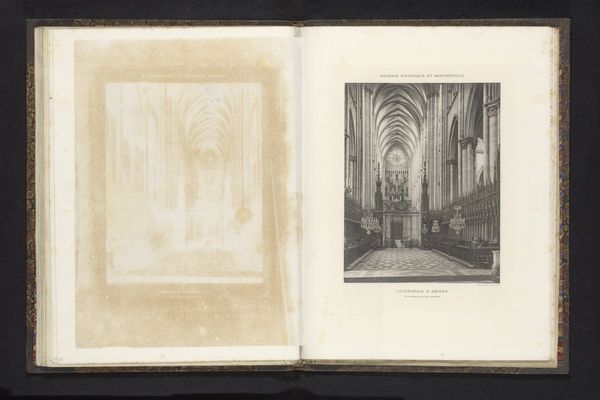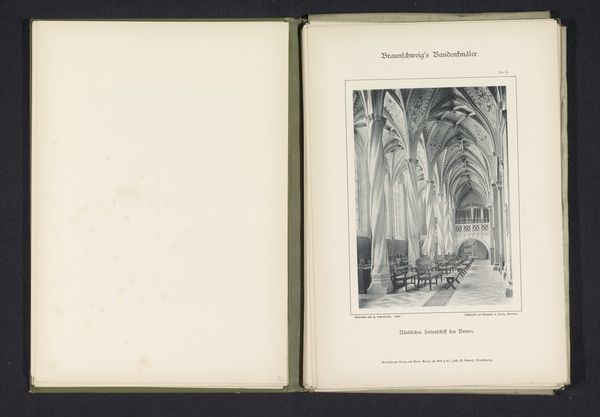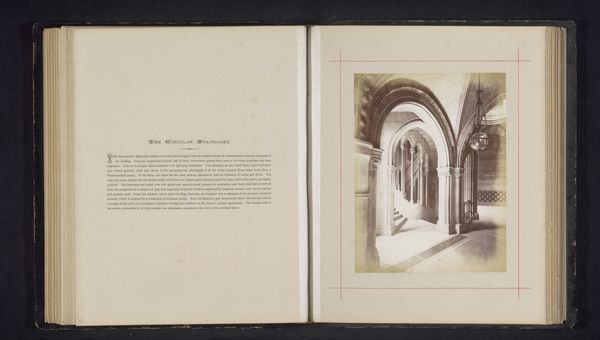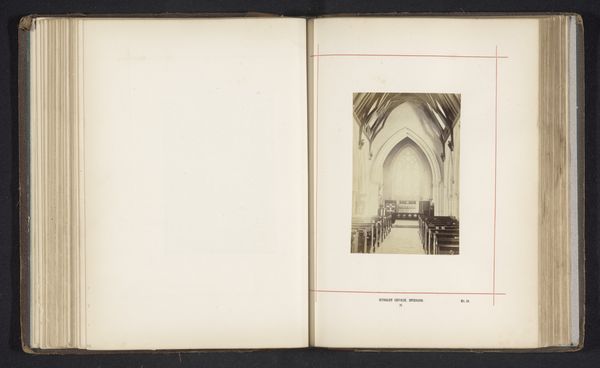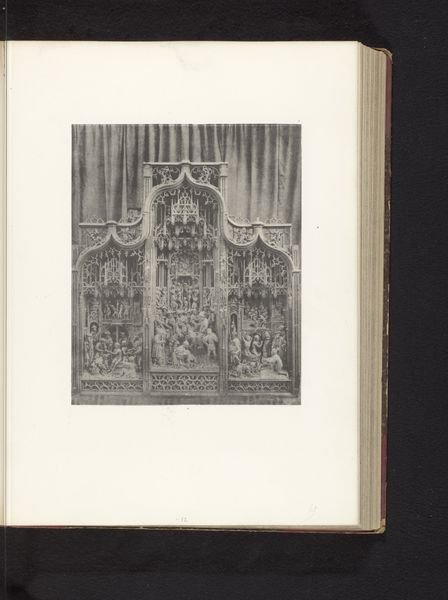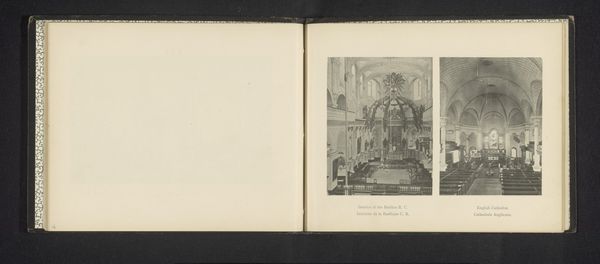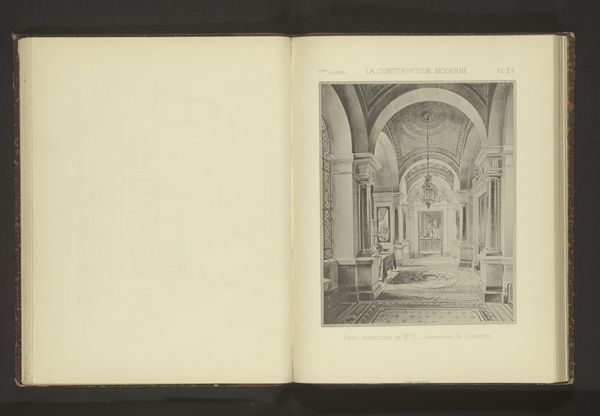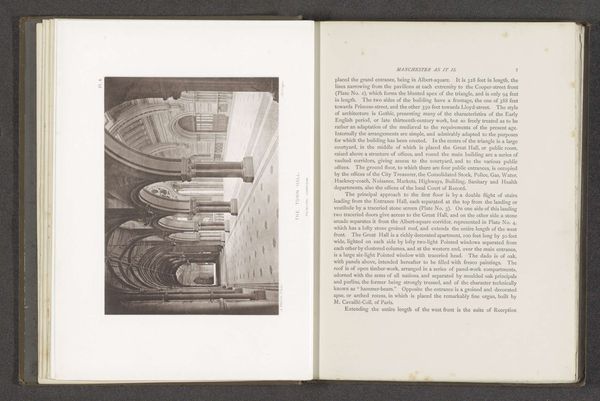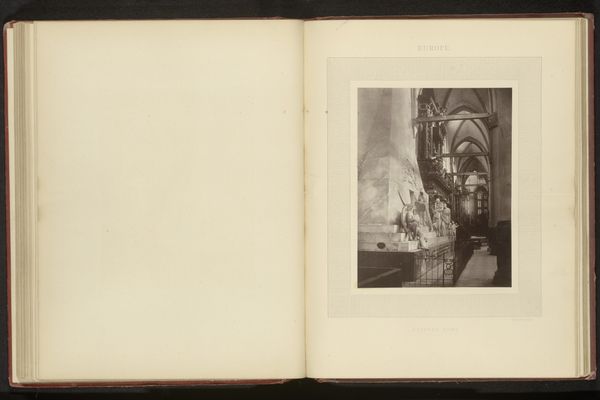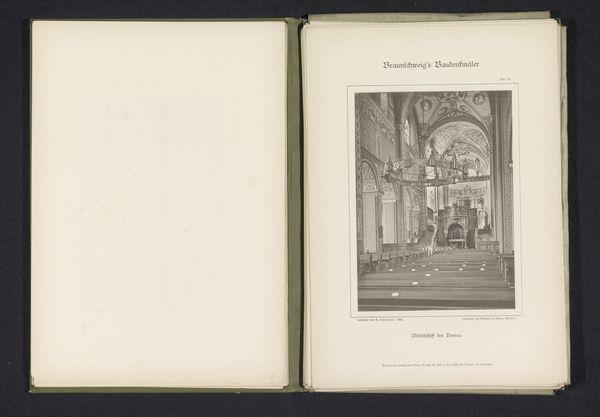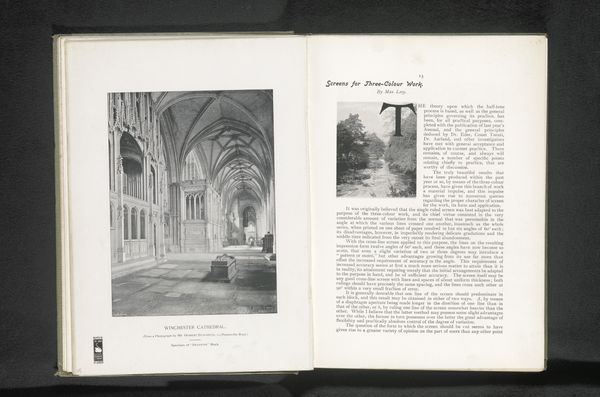
Reproductie van een tekening van een gezicht op een ruïne te Yorkshire door Herbert Railton before 1900
0:00
0:00
Dimensions: height 130 mm, width 188 mm
Copyright: Rijks Museum: Open Domain
Curator: Here we have "Reproductie van een tekening van een gezicht op een ruïne te Yorkshire door Herbert Railton," an engraving dating from before 1900. What is your first take? Editor: My first impression is of fragility and time. The delicate etching work against the stark white paper emphasizes the transient nature of existence—the ruin, of course, being the central signifier of that. Curator: Precisely. Note how the artist uses incredibly fine lines to create texture and depth, particularly in the foliage that encroaches on the architectural remains. The contrast between light and shadow serves to accentuate the decay and the stoic resistance of the stone structure itself. The lines aren't just descriptive, but emotive, capturing the romantic aesthetic. Editor: I am particularly struck by the interplay of nature reclaiming what was once considered a stronghold of power. This visual vocabulary invites reflections on empire and its inevitable decline—consider also that it dates to the late Victorian period. Perhaps Railton comments on colonialism's unsustainable exploitation that would ultimately also result in decline, even decay. Curator: An intriguing point to consider the politics of the composition! Railton presents us a traditional, almost picturesque ruin, yes, but in this very visual approach also the formal qualities must be attended to. Look how he employs a delicate hatching technique that creates the effect of diffused light, adding another layer of meaning by evoking notions of fleeting time. Editor: Building upon this thought, the very *act* of reproduction also mirrors that which the drawing represents: like a reproduction made of a former ruin, it, too, undergoes translation into a mediated historical echo. This then creates another question about whose ruins are worth depicting and circulating in popular visual media. Curator: Yes! The semiotic structure, that push and pull between the sign and the referent—it speaks volumes about late Victorian-era sensibilities and their relation to time, memory, and, indeed, architectural form. Editor: I agree completely. Looking closely, this image provides space for crucial narratives about cultural change and hegemonic fragility to surface, even today. Curator: I think this brief examination unveils the many complex aspects of Railton's rendering, showing just how rewarding looking closely at such an historical object can be.
Comments
No comments
Be the first to comment and join the conversation on the ultimate creative platform.
